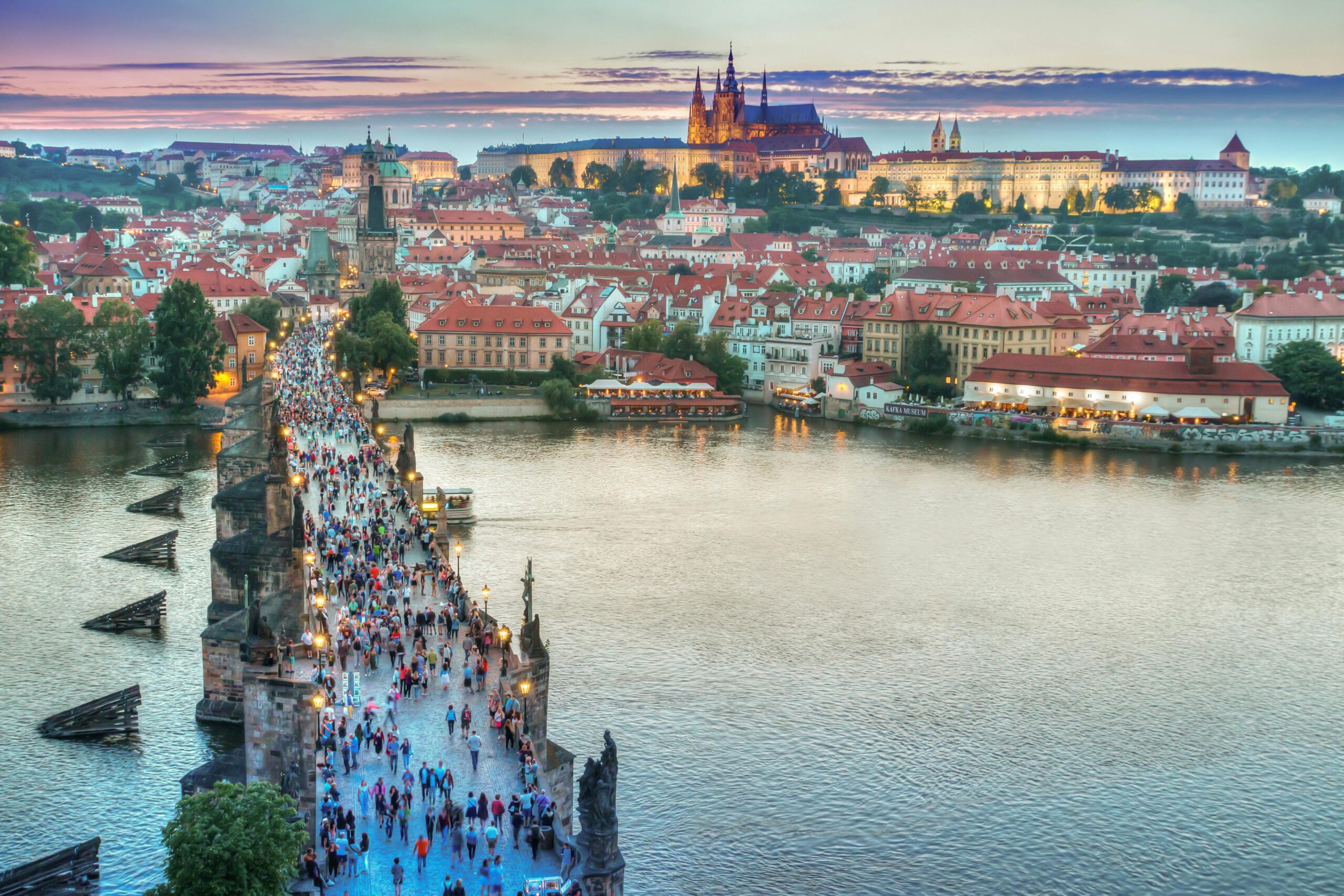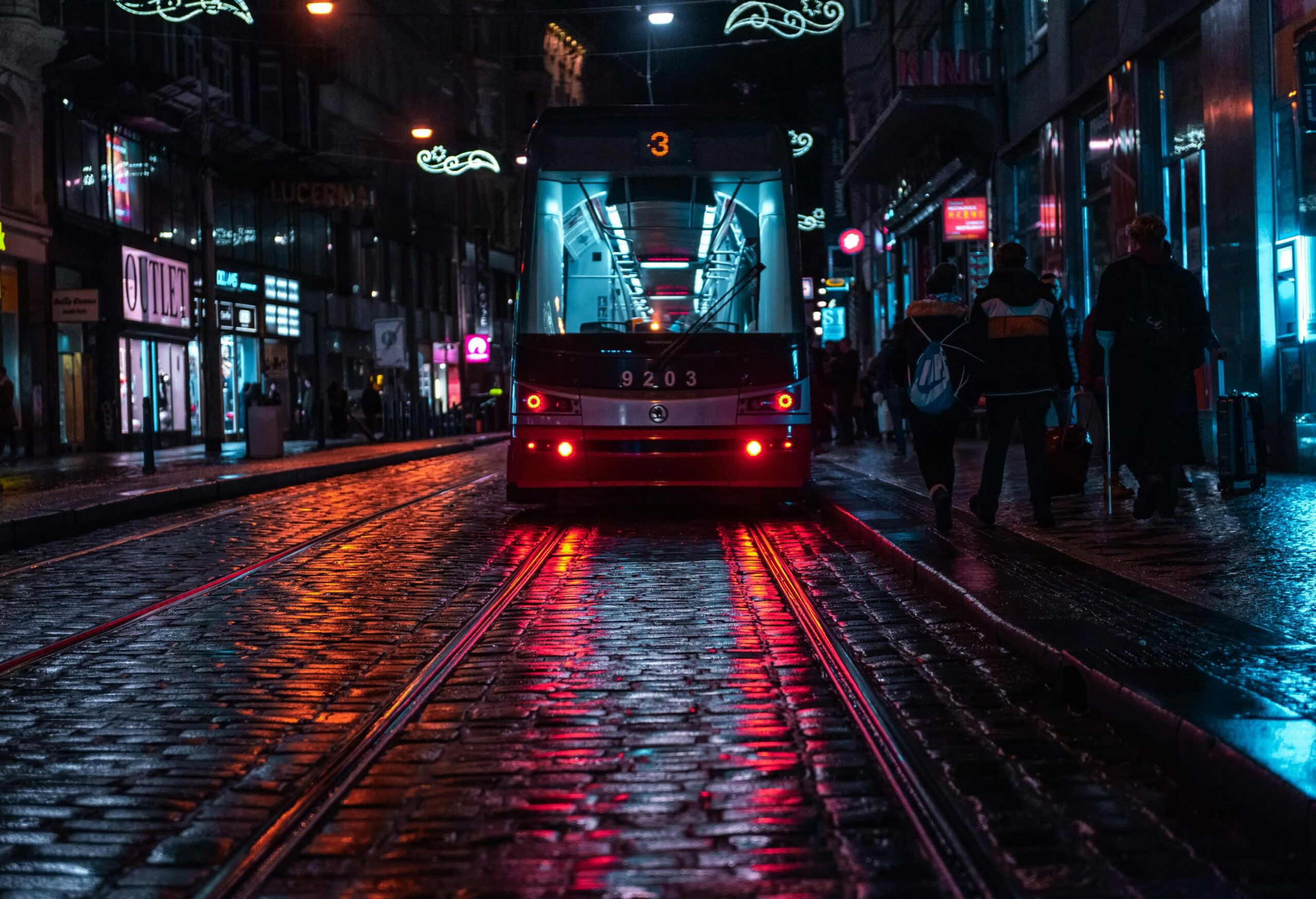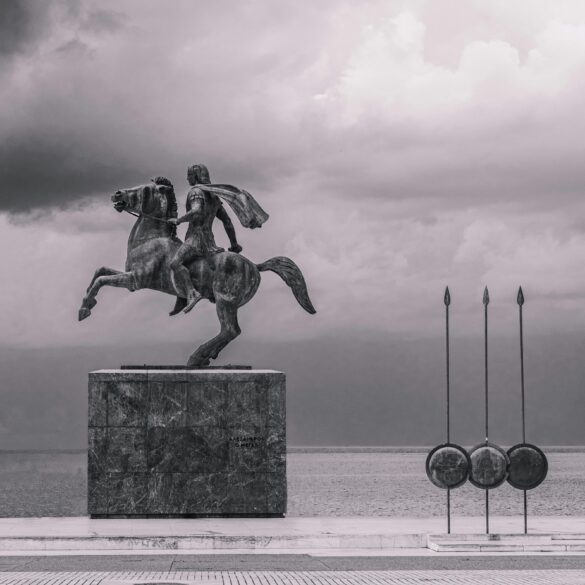Prague Travel Guide 2025: Your Complete Planning Resource
Standing on Charles Bridge at sunrise last September, watching the mist rise from the Vltava River while Prague Castle emerged like something from a fairy tale, I was reminded why this city continues to capture hearts decades after the Velvet Revolution1. Prague in 2025 isn’t just another European capital—it’s a living museum where Gothic spires share skylines with Art Nouveau masterpieces, and where you can sip world-class beer in cellars that predate Columbus.
But here’s what gets me excited about Prague right now: the city has found its sweet spot between preserving authentic charm and embracing thoughtful modernization. After navigating the challenges of over-tourism pre-2020, Prague has emerged with better crowd management, enhanced sustainability initiatives, and a renewed focus on authentic experiences2. Frankly, I think 2025 might be the perfect time to visit.
Why Prague Should Top Your 2025 Travel List
Let me be completely honest—I’m somewhat biased here. Prague captured my heart during my first visit in 2018, and each subsequent trip has only deepened my appreciation. But there are compelling, objective reasons why 2025 is particularly opportune for visiting this Central European gem.
Czech Republic Quick Facts
Population: 10.5 million | Capital: Prague (1.3 million) | Currency: Czech Crown (CZK) | Language: Czech (English widely spoken in tourist areas) | EU Member: Yes (since 2004) | UNESCO Sites: 16 total, with Prague’s Historic Centre designated in 1992
First, Prague has successfully balanced tourism recovery with crowd management. The city implemented new visitor flow systems in 2023-2024, meaning popular attractions like Prague Castle and Charles Bridge are more enjoyable without the crushing crowds we saw in 2018-20193. I noticed this improvement dramatically during my visit last fall.
Second—and this really excites me as someone who cares about sustainable travel—Prague launched ambitious eco-tourism initiatives in 2024. The city now offers carbon-neutral walking tours, promotes local artisan experiences, and has expanded its already excellent public transportation network4. You can genuinely explore Prague responsibly while supporting local communities.
What strikes me most about Prague—beyond the obvious architectural beauty—is how layered the experience becomes. Sure, you’ll photograph the Astronomical Clock and walk across Charles Bridge (and you absolutely should). But then you’ll discover that tiny jazz club tucked away in Vinohrady, or stumble upon a hidden courtyard in Lesser Town where locals gather for evening conversations.
Planning Your Prague Adventure: Timing is Everything
After multiple visits across different seasons, I’ve developed strong opinions about Prague’s rhythms. Spring (April-May) remains my personal favorite—fewer crowds than summer, pleasant weather, and the city literally blooming. The lilacs along Petřín Hill in early May? Absolutely magical.
Summer (June-August) offers the warmest weather and longest days, but also peak crowds and highest prices. I learned this lesson the hard way during a July visit in 2019. However, summer brings outdoor concerts, beer garden season, and that incomparable Central European summer evening light that photographers dream about5.
Insider Planning Timeline
Based on my experience and conversations with local tourism professionals, here’s when to book what: Accommodation: 2-3 months ahead for spring/summer, 4-6 weeks for winter. Castle tickets: Always book online in advance. Restaurant reservations: High-end places require 1-2 weeks notice, but amazing local spots often accept walk-ins.
Fall (September-October) might actually be Prague’s best-kept secret. The weather stays mild into October, summer crowds dissipate, and the city takes on this gorgeous golden quality as leaves change along the riverbanks. Plus, it’s prime season for Prague’s incredible classical music scene6.
Must-See Attractions: Beyond the Tourist Trail
Look, everyone tells you about Prague Castle and Charles Bridge—and rightfully so, they’re absolutely spectacular. But having spent countless hours exploring this city, I want to share both the classics and the discoveries that made my Prague experiences genuinely unforgettable.
The Unmissable Classics (But Done Right)
Prague Castle deserves every bit of its reputation as the world’s largest ancient castle complex7. However, here’s what I wish someone had told me before my first visit: arrive either first thing in the morning (8 AM opening) or late afternoon. Mid-day crowds can be overwhelming, particularly in summer.
The castle complex includes St. Vitus Cathedral—honestly, one of the most breathtaking Gothic interiors I’ve experienced anywhere. Don’t rush through the nave; take time to appreciate the stained glass windows, particularly the Art Nouveau masterpieces by Alphonse Mucha. The Old Royal Palace offers fascinating insights into Bohemian history, though I’ll admit the historical explanations can feel dense if you’re not already familiar with Central European politics.
Charles Bridge requires strategy. Yes, it’s touristy—unashamedly so—but it’s tourist for good reasons. The 14th-century stone bridge offers unparalleled views of Prague Castle, the Lesser Town, and the Old Town. My advice? Visit twice: once during peak hours to experience the energy, street musicians, and vendors (it’s actually quite fun), and once at sunrise or after 9 PM for contemplative moments and better photographs8.
Hidden Gems That Locals Actually Recommend
This is where Prague gets interesting. Kampа Island, right beneath Charles Bridge, feels like a secret garden in the heart of the city. The Kampa Museum showcases contemporary art, but honestly, I go there just to wander the peaceful parkland and watch locals feeding swans along the Vltava.
Vyšehrad, Prague’s “other castle,” sits on a hill south of the city center and offers everything Prague Castle does—stunning views, historical significance, beautiful cathedral—with fraction of the crowds. The Vyšehrad Cemetery houses tombs of famous Czechs including composer Antonín Dvořák. It’s become my go-to recommendation for travelers seeking authentic Prague atmosphere without tourist chaos9.
Speaking of neighborhoods locals actually frequent: Vinohrady and Karlín have emerged as Prague’s creative districts. Vinohrady offers tree-lined streets, excellent cafes, and the kind of relaxed atmosphere where you can spend entire afternoons people-watching. Karlín, once industrial, now hosts some of Prague’s best restaurants and has this exciting energy of a neighborhood in transition.
Where to Stay: Neighborhood Guide
After staying in different Prague neighborhoods over multiple visits—and making a few mistakes along the way—I’ve developed clear preferences based on what kind of experience you’re seeking.
- Old Town (Staré Město): Maximum convenience, premium prices. You’ll literally roll out of bed onto cobblestone streets. Perfect for first-time visitors or short stays, but expect tourist crowds and noise.
- Lesser Town (Malá Strana): My personal favorite for romance and atmosphere. Quieter than Old Town, still walkable to everything, with gorgeous baroque architecture. Slightly higher prices but worth it for the ambiance.
- New Town (Nové Město): Best value for money. Easy tram access to attractions, excellent restaurants, more authentic neighborhood feel. Where I typically recommend friends stay.
- Vinohrady: Perfect for longer stays or repeat visitors. Residential area with cafes, parks, and local life. Requires tram rides to major sights but offers genuine Prague living experience.
Accommodation Reality Check
Prague’s accommodation landscape changed significantly post-2020. Many hotels upgraded during the pause in tourism, while Airbnb regulations became stricter10. This generally means better hotel experiences but fewer (and pricier) apartment rentals. Book directly with hotels when possible—I’ve consistently found better rates and upgrades this way.
Getting Around Prague: A Transport Love Story
Honestly, Prague might have my favorite urban transportation system in Europe. The combination of metro, trams, and buses is efficient, affordable, and genuinely pleasant to use. Plus, it’s environmentally conscious—something that matters more to me with each passing year.
The metro system, built during the communist era, feels like traveling through underground palaces. Seriously. Stations like Náměstí Míru feature chandeliers and marble that rival any palace. The three lines (A-green, B-yellow, C-red) connect major tourist areas efficiently11.
But trams—trams are Prague’s soul. The vintage red-and-cream cars climbing hills, the modern low-floor models gliding along riverfront tracks, the gentle ding-ding-ding announcing stops. Tram 22 essentially provides a sightseeing tour connecting Prague Castle, Lesser Town, National Theatre, and Vinohrady. I’ve taken it countless times just for pleasure.
Walking remains the best way to truly experience Prague’s historic center. The entire Old Town and Lesser Town are essentially pedestrian-friendly, though be prepared for cobblestones—comfortable shoes are non-negotiable. I learned this the hard way during my first visit wearing inappropriate footwear.

Prague’s Food & Drink Scene: Beyond Beer and Goulash
Let’s address the elephant in the room first: yes, Czech beer is extraordinary. With per capita consumption higher than anywhere else globally, beer culture here runs deeper than simple consumption—it’s social fabric, history, and craft all rolled into one12. But Prague’s culinary landscape extends far beyond sudsy stereotypes.
Traditional Czech cuisine gets unfairly dismissed as heavy and monotonous. Sure, it’s hearty—this is Central Europe, where winters are serious business—but when executed properly, dishes like svíčková (beef sirloin with cream sauce and dumplings) or goulash achieve genuine comfort food perfection. U Fleku, Prague’s oldest brewery dating to 1499, serves both exceptional beer and surprisingly refined traditional fare in atmospheric medieval halls.
However, what excites me most about Prague’s current food scene is the creative fusion happening between traditional Czech cooking and international influences. Restaurants like Lokál serve elevated comfort food using local ingredients and traditional techniques. Field, in the trendy Karlín district, offers contemporary European cuisine that would fit seamlessly in Copenhagen or Stockholm13.
Coffee Culture and Sweet Discoveries
Prague’s coffee culture has exploded over the past decade. Café Savoy, with its stunning Art Nouveau interior, provides Instagram-worthy backdrops for exceptional coffee and pastries. But honestly, my favorite discoveries have been smaller places like Café Louvre (Einstein and Kafka apparently used to debate here) or the cozy Míru Café in Vinohrady.
Czech pastries deserve special mention. Trdelník, the spiral-shaped “chimney cake” sold on every street corner, is actually Slovak in origin but has become synonymous with Prague tourism. For authentic Czech sweets, seek out koláče (filled pastries) or kremrole (cream-filled pastry tubes) in local bakeries rather than tourist stands.
Capturing Prague: Instagram Gold and Hidden Frames
As someone who’s taken approximately 3,000 photos of Prague over multiple visits—yes, I checked—I’ve learned that timing and location matter more than equipment. The city offers photographic gold at every turn, but knowing when and where to point your camera makes the difference between tourist snapshots and memorable imagery.
- Golden Hour at Prague Castle: Position yourself on the Charles Bridge or Kampa Island about 30 minutes before sunset. The castle glows like something from a fairy tale.
- Blue Hour from Petřín Hill: The panoramic city view transforms as streetlights begin twinkling below. Worth the climb or funicular ride.
- Architectural Details in Lesser Town: The baroque facades, ornate doorways, and hidden courtyards provide endless macro photography opportunities.
- Tram Photography: The vintage trams against historic backdrops create quintessentially Prague compositions. Tram 22 offers mobile photography opportunities.
Here’s something most photography guides won’t tell you: Prague’s weather changes dramatically throughout the day, especially in spring and fall. That overcast morning can transform into brilliant sunshine by afternoon, completely altering the photographic potential. I’ve learned to build flexibility into my photography plans14.
Local Photography Ethics
Prague residents have become understandably weary of constant photography tourism. Be respectful when photographing in residential neighborhoods like Vinohrady or Karlín. Ask permission for close-up shots of people, and remember that beautiful doorways and courtyards often belong to private residences. A little courtesy goes a long way.
Secret Photo Spots Locals Actually Use
Forget the overcrowded viewpoints for a moment. Some of my favorite Prague photographs came from unexpected locations. The courtyard of the Prague Municipal Library offers stunning Art Nouveau interiors without crowds. The rooftop terrace at Letná Park provides panoramic city views with local families enjoying picnics rather than tour groups jostling for position.
Early morning along the Vltava riverbank, particularly near the Dancing House, offers reflective water shots with the castle in the background. I discovered this spot accidentally during a jetlag-induced early morning walk and have returned every subsequent visit.
Cultural Experiences: Beyond Sightseeing
Prague’s cultural depth extends far beyond architecture and museums, though both are world-class. The city maintains an active classical music scene—this is, after all, the home of Dvořák, Smetana, and countless other composers who shaped European music15.
The Prague Spring International Music Festival, typically held May-June, transforms the city into a classical music celebration. But year-round, venues like the Municipal House’s Smetana Hall or the State Opera offer performances that would cost triple in Vienna or London. I’ve attended several concerts and consistently been impressed by both quality and affordability.
For contemporary culture, Prague’s jazz scene thrives in intimate venues like AghaRTA Jazz Centrum or Jazz Dock (floating on the Vltava River). The atmosphere in these smaller venues feels authentic and relaxed—locals outnumber tourists significantly, creating genuine cultural exchange opportunities.
What really fascinates me about Prague is how visible history remains in daily life. Walking through Wenceslas Square, you pass the memorial to Jan Palach, the student who self-immolated protesting Soviet occupation in 1969. The Velvet Revolution memorial sites are integrated into normal city life rather than cordoned off as tourist attractions16.
Budget Planning: Prague Value Breakdown
One of Prague’s most appealing aspects—especially compared to Western European capitals—remains its excellent value for money. However, costs have increased since 2019, and 2025 pricing reflects both post-pandemic recovery and Prague’s growing popularity among international visitors.
| Category | Budget Range | Mid-Range | Luxury |
|---|---|---|---|
| Accommodation (per night) | €25-45 | €60-120 | €150-300+ |
| Meals (per day) | €15-25 | €35-50 | €70-100+ |
| Transportation (daily) | €3-5 | €5-8 | €15-25 |
| Attractions/Activities | €10-20 | €25-40 | €50-80+ |
These figures reflect my research of current Prague pricing combined with personal experience17. Budget travelers can comfortably explore Prague for €50-70 daily, while mid-range visitors should plan €100-150 per day including accommodation, meals, transportation, and activities.
Money-Saving Strategies That Actually Work
After multiple Prague visits, I’ve developed reliable cost-cutting techniques: Purchase multi-day transport passes rather than individual tickets. Eat lunch at local restaurants (cheaper than dinner). Many museums offer student/senior discounts. Beer costs the same in neighborhood pubs as tourist areas—but food quality and atmosphere are often better locally.
Safety, Sustainability & Practical Wisdom
Prague ranks among Europe’s safest capital cities, but like anywhere with significant tourism, petty crime exists. Pickpocketing occurs primarily in crowded areas like Charles Bridge, Old Town Square, and public transportation during rush hours. I’ve never personally experienced issues, but remain aware in crowded situations.
The most common tourist scams involve currency exchange (use bank ATMs instead of exchange booths), taxi overcharging (use Uber or Bolt), and restaurant bill padding in tourist areas. Reading bills carefully and asking for receipts prevents most problems18.
Sustainable Prague: Travel Responsibly
Prague has made impressive sustainability commitments, and visitors can participate meaningfully. The city’s public transportation system runs partially on renewable energy, making metro and tram use genuinely eco-friendly choices. Walking tours operated by local guides support community economics better than large tour companies.
Several Prague restaurants now emphasize locally-sourced ingredients and seasonal menus. Lokál sources from Czech farmers, while Field focuses on sustainable seafood and organic produce. Choosing these establishments supports environmental responsibility while enjoying excellent cuisine.
For accommodation, look for hotels with Green Key certification—several Prague properties participate in this environmental program. The city also encourages refillable water bottles through public fountains, reducing plastic waste significantly19.
Your Prague Journey Awaits
After multiple visits spanning different seasons and travel styles, I remain convinced that Prague offers one of Europe’s most rewarding urban travel experiences. The combination of architectural beauty, cultural depth, culinary excitement, and genuine value creates something special—a city that rewards both brief visits and extended exploration.
Whether you’re drawn by Prague’s fairy-tale architecture, world-class beer culture, rich musical heritage, or simply the prospect of wandering cobblestone streets where history feels tangible, this remarkable city delivers. Plan thoughtfully, travel respectfully, and prepare for Prague to capture your imagination completely.
The key to exceptional Prague travel lies in balancing must-see attractions with spontaneous discoveries, tourist experiences with authentic local encounters, and careful planning with open-minded exploration. Most importantly, give yourself permission to fall in love with this extraordinary city—just as countless travelers before you have done, and countless more certainly will.
Mobile-optimized content delivery complete.
References


